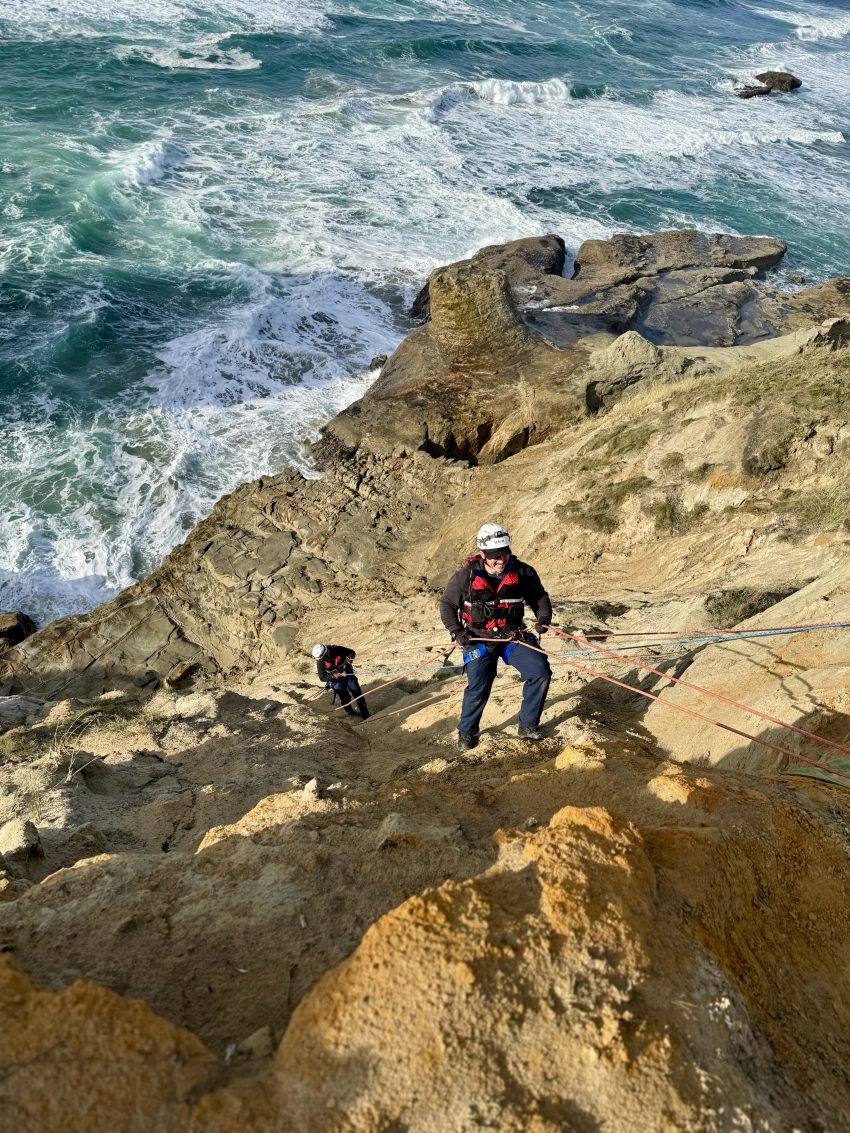On Tuesday November 18th, volunteer and career members of Nestucca Rural Fire Protection District (NRFPD), working alongside responders from Netarts–Oceanside RFPD, completed a high-angle rope rescue training at Cape Kiwanda. Crews operated nearly 100 feet above the Pacific Ocean on steep sandstone cliffs, one of the most demanding and high-risk areas in our district. Training here keeps our teams sharp for the moments when every second matters.
Over the past several years, NRFPD, has steadily strengthened and modernized our technical rescue program and began working closely with NORFPD. Across our coastal communities, winding roads, steep cliffs, and river embankments create low-frequency, high-risk emergencies that demand disciplined, ongoing training. Together, we train relentlessly to keep our communities and responders safe.
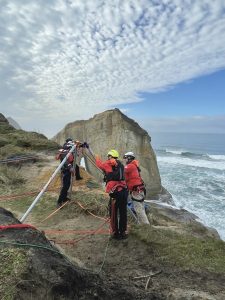
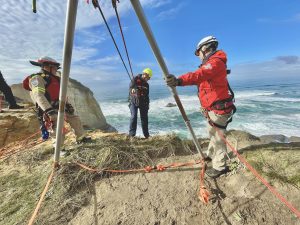
 At NRFPD we now have 16 members who are either certified or actively completing their Rope Rescue Technician certifications through Rescue 3 International and/or Oregon DPSST. Rope Rescue Technicians are trained to the highest standard, capable of navigating vertical, unstable, and high-hazard terrain to perform complex technical rescues in alignment with National Fire Protection Association (NFPA) standards for technical rescue. Their expertise enables rapid, safe deployment across coastal cliffs, wilderness areas, urban settings, and industrial environments.
At NRFPD we now have 16 members who are either certified or actively completing their Rope Rescue Technician certifications through Rescue 3 International and/or Oregon DPSST. Rope Rescue Technicians are trained to the highest standard, capable of navigating vertical, unstable, and high-hazard terrain to perform complex technical rescues in alignment with National Fire Protection Association (NFPA) standards for technical rescue. Their expertise enables rapid, safe deployment across coastal cliffs, wilderness areas, urban settings, and industrial environments.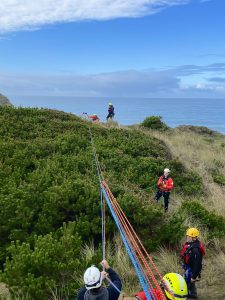
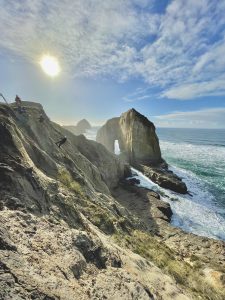
The training scenarios were completed with the support of Oregon State Parks and in close partnership with the Netarts–Oceanside Rural Fire Protection District, whose crews routinely collaborate with us during real emergencies. We trained in the same challenging terrain where several actual rescues, including a recent canine rescue, have occurred. High winds, unstable sandstone, shifting sand, and unpredictable surf make this area uniquely dangerous. By training here, our responders prepare for the exact conditions they encounter on real calls.
As part of our continued progress, NRFPD has also designed a water-tight sling medical pack that allows rescuers to carry major trauma supplies during cliff, beach, and water rescues. This ensures immediate access to lifesaving equipment the moment a patient is reached. Our district trains in these environments because we know the cliffs, the ocean, and the risks. The more prepared we are, the safer our community, visitors, and our responders will be.
Photos from simulated rescues tell the story about the work, preparation, and dedication that goes into protecting our coastal community.

